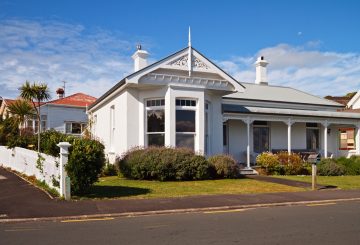オークランドの地域医療保健委員会(DHB)では、国境再開後のCovid(新型コロナウイルス)を伴う生活を計画するために、モデルケースを使った迅速な作業が行われていました。
これは、Covidが地域社会に永続的に存在することがどのようなものであるかを示す、悲惨な絵を描いています。
最も可能性が高いと考えられているシナリオでは、平均して週に1,000人以上の地域感染者が発生し、33人が入院し、6人が死亡するとのことです。
DHBのプロバイダー・サービス・ディレクターであるMike Shepherd氏によると、病院の準備を整えるための作業は、すでに進められていると言います。
その中には、集中治療室、小児集中治療室、産科病棟のアップグレードも含まれており、人工呼吸を改善したり、Covid以外の患者のための安全なエリアを作るなどの作業を行っています。
国境が開かれたときに何が起こるかは誰にもわかりませんが、DHBは今すぐ計画を立てなければならず、モデルケースはそれを正しく行うための最良の機会を与えてくれた、とシェパード博士は語りました。
「デルタ型は、特に空気感染する病気に関して、これまでにない大きな問題を提起しています。」
このモデルケースはオークランドDHBのみを対象としているため、都市全体では感染者数が多くなります。
このモデルでは、国境が開放された時の様々なシナリオが示されていますが、最も現実的なシナリオは、対象となる人々の90%がワクチンを接種し、入国可能な国の制限や、レベル2スタイルの制限など、いくつかの管理が引き続き行われるというものでした。
集中治療学会の広報担当者であるAndrew Stapleton氏は、Covidがこの国に永続的に存在するという現実に備えて、他の病院でも同様の作業が行われていると述べています。
「この感染症の喉元の手綱を緩めてしまえば、あっという間に国中に広まってしまいます。」
病院が準備しなければならないのは、ウイルスの治療を受ける人だけではありません。
交通事故の被害者や、手術や出産のために来院した患者が、たまたまCovidを発症していた場合もあるでしょう。
スタッフや他の患者を感染させないように気を配らなければならないのです。
オークランドでは、週に30人が感染すると予測されていました。
Shepherd博士は、集中治療専門看護師の不足を解消することも含め、どれだけのスタッフが必要かについては、現在も検討中であると述べました。
「私たちはICUのベッド数を心配していますが、これは私たちができるすべての仕事に影響を与えると考えています。」
Stapleton博士によると、Covidの患者の増加により、全国各地で予定されていた手術が遅れることになるだろうとのこと。
海外から集中治療専門の看護師を採用し、彼らとその家族が容易に移住できるようにすることが急務だと述べています。
他の国々は、Covidのまん延がどのようなものかを示していると言います。
スコットランドでは、ニュージーランドと同規模の国で、ワクチン接種率が88%だったにもかかわらず、1日に2000人の感染者が出ていました。
「そのため、私たちが対処することになる感染者の多さなどの想定は、人々の理解が得られていないのだと思います」と述べています。
両医師とも、ワクチン接種率が高ければ高いほど、医療システムが対応しやすくなると述べています。
情報元:RNZ News





























































